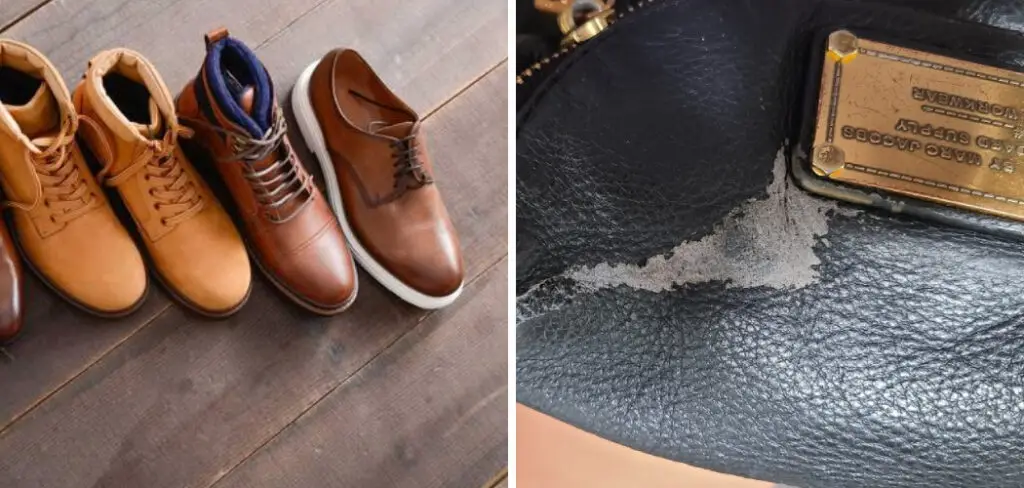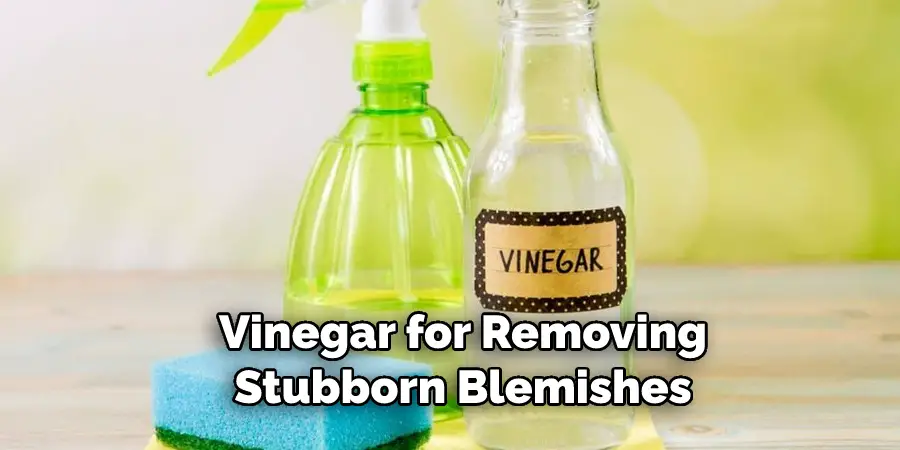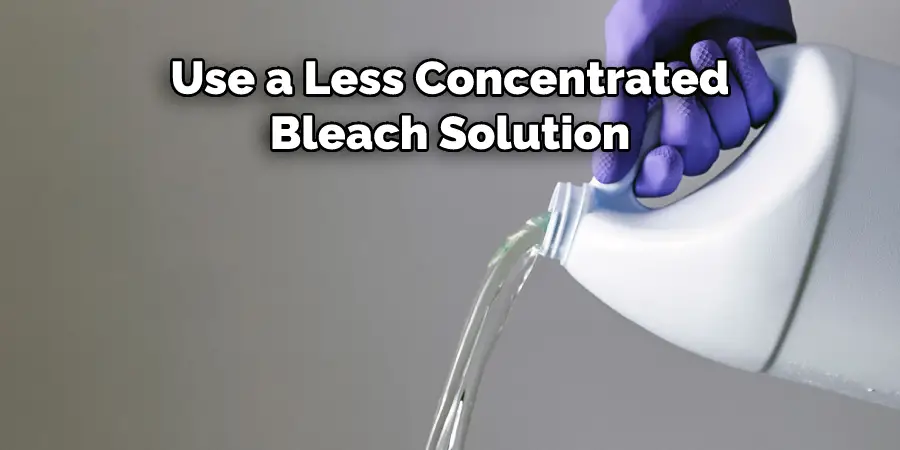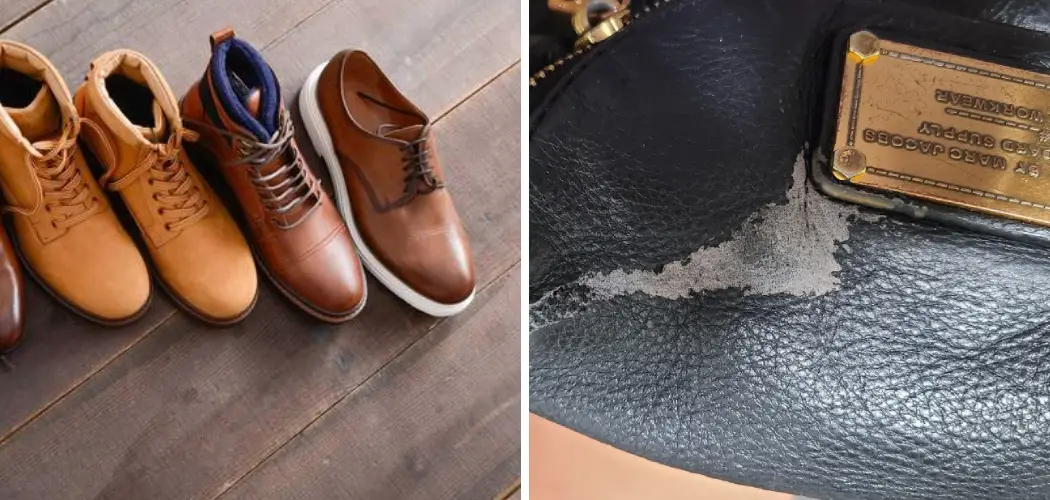If you’re a leather lover and have been looking for ways to whiten some of your pieces, then look no further. Bleaching leather is an easy process that can help enhance virtually any item that has seen better days or just needs to give it more character. It may sound like a daunting task, but with the right cleaning products and some careful attention, it’s surprisingly simple.

In this blog post, we’ll walk you through everything you need to know about how to bleach leather correctly, including material preparation and the right tools required for successful results! Armed with this knowledge and a bit of patience, bleaching grubby items back into gleaming glory won’t be nearly as daunting as it initially seems.
What is Bleaching Leather?
Bleaching leather is a process of lightening the color and removing any existing dyes from the leather. This process can be done with either chemical bleaches or natural bleaches such as sunlight to achieve different levels of whiteness in the leather.
A careful evaluation of what is right for a particular hide needs to be undertaken so that the desired level of brightness is achieved without compromising on texture, softness, and durability. Furthermore, when using chemicals, special attention must be given to the type chosen and the dilution required so that both functionality and aesthetic appeal are preserved.
Materials You Need to Lightning Leather
Before you can begin bleaching your leather, you need to gather the necessary materials. You will need some leather cleaning products specifically designed for use on leather:
- Hydrogen peroxide
- White vinegar
- Mild liquid soap such as dish detergent
- A soft-bristled brush or cloth
- Clean lint-free rags
Now we have supplies and we are going to know how to bleach leather deeply. There have several ways and steps.
10 Effective Methods on How to Bleach Leather
1. Choose a Mild Detergent for Cleaning Leather
Leather is porous, so harsh chemicals can damage the leather’s surface and ruin its appearance. Use gentle soap or detergent specifically formulated for leather to avoid any further damage. It is also important to use a clean, soft cloth or sponge to ensure dirt doesn’t get trapped in the leather.
When you are done cleaning the leather, be sure to rinse it off with clean water and dry it thoroughly. But remember – before you start bleaching your leather, it is important to make sure it is clean. If not, the results may be unsatisfactory.
2. Use White Vinegar
White vinegar is a great option for removing stubborn blemishes from leather products. Mix 2 parts white vinegar with 1 part water in a bucket or bowl, then dip your cloth into the solution and dab the leather gently.

Let it sit for about 15 minutes before wiping down any excess solution with a clean, damp cloth. Afterward, let it air dry in a well-ventilated room. You can repeat this process if necessary until the blemishes have been removed from the leather. But take caution not to leave the solution on the leather for too long as it can cause discoloration.
3. Try Spot Cleaning With Hydrogen Peroxide
Hydrogen peroxide can be used as a lighter bleaching agent for difficult stains on leather. Before using any chemicals, it is recommended that you test the solution on an inconspicuous area of the leather.
It is important to mix 3 parts water with 1 part hydrogen peroxide before applying it to the leather surface. Dip a cloth into the mixture and dab it onto the stain until it disappears. Afterward, rinse off any excess solution and let the leather air dry in a well-ventilated room.
4. Bleach Leather with Lemon Juice
If you want to know how to bleach leather naturally, lemon juice is a great option. It can be used as a mild bleaching agent without the potential risks of using harsh chemicals on your leather goods.
Mix equal parts water and freshly squeezed lemon juice, then soak a cloth in the mixture and gently dab it onto any blemishes on the leather. Allow the solution to sit for about 15 minutes before wiping off any excess with a damp cloth. Afterward, let it air dry in a well-ventilated room.
5. Prepare a Mixture of Bleach and Water
Create a mixture with one part chlorine bleach and four parts water. Make sure to properly mix the solution in a well-ventilated area, as chlorine bleach can be dangerous if inhaled. Also, wear gloves and protective eyewear when handling the bleach to avoid any skin irritation or eye damage.
Using a soft cloth, apply the mixture onto stained leather areas while avoiding contact with the surrounding leather. Then, rinse off any excess solution with a damp cloth and let it air dry in a room with proper ventilation.
It is important to note that this method should only be used on white or light-colored leather as it can cause discoloration of darker colors. Also, do not leave the bleach solution on the leather for too long or it may cause damage.
6. Test the Leather
Before bleaching the leather, it is important to test a small area of the leather item to make sure that its color won’t be affected by any chemicals you use for bleaching. If so, move on to another method or use a less concentrated bleach solution.

A great way to test the leather is to apply a small amount of solution onto an inconspicuous area, such as the underside or back of the item. Then, let it sit for a few minutes before wiping off any excess with a damp cloth. If no discoloration occurs after 24 hours, then you can safely proceed with bleaching the rest of the leather product.
7. Check the Leather Was Dyed
Before you attempt any type of bleach on the leather, it’s best to check how the material was dyed. If your leather has been aniline or oil-dyed, the bleach can affect the color of the leather and cause it to fade. In contrast, if your leather was chrome-dyed, then you may use bleach to lighten any stains or fading on its surface.
Knowing how the material was dyed will help you determine which type of bleach (if any) is safe to use on your leather product. It is also important to test a small area of the leather before using any bleaching solution to avoid damaging the material.
8. Apply a Leather Bleach
Leather bleach is specifically designed to remove stains, streaks, and discolorations from leather without damaging its texture or color. Before applying the bleaching agent, make sure to read the instructions and safety warnings on the label.
Dampen a cloth with the bleach solution, then gently rub it onto any discolored areas of the leather, making sure to avoid contact with the surrounding leather. Allow the solution to sit for several minutes, then wipe off any excess with a damp cloth. Finally, let the leather air dry in a well-ventilated room.
9. Bleach Leather Using Chlorine-Free Bleach
Chlorine-free bleach is a great alternative to chlorine-based bleaching agents. This type of bleach is gentler on leather and can be used to remove stubborn stains without damaging the material.

Mix one part chlorine-free bleach with four parts water in a bucket or bowl and dip a soft cloth into the solution. Gently rub the cloth onto any stained areas of the leather, avoiding its contact with the surrounding material. Then, rinse off any excess solution with a damp cloth and let it air dry in a well-ventilated room.
10. Use a Hair Dryer to Bleach Leather
A blow dryer can be an effective way to bleach leather depending on the type of stain. Turn the dryer to the lowest setting and hold it about 6 inches away from the stained area while wave-like motions with the dryer over the leather. This will help to lift stubborn stains and discolorations.
Make sure not to keep the hair dryer in one spot for too long or it may cause damage to the leather. After a few minutes, turn off the blow dryer and let the leather air dry naturally in a well-ventilated room.
With the right tools and techniques, it is possible to safely bleach leather without causing damage to its color or texture. It’s important to take proper safety precautions when using
bleaching agents on leather and only use solutions specifically designed for leather products.
By following these steps, now you know how to bleach leather and you can easily remove any stains or discolorations from your leather items using natural or chemical solutions.
To keep your leather in top condition, remember to always clean before bleaching and test a small area of the item beforehand. Doing so will ensure that your leather stays looking good for years to come.

Final Thoughts
It is important to remember that bleach should only be used as a last resort for bleaching leather items, as it does cause permanent damage. A better approach is to try cleaning the leather with a damp rag before taking any other action. However, if you must use bleach to clean your leather item, dilute the bleach with water and test it on an area of the item first.
If you take the steps listed in this post, you can successfully clean and use lighten your leather item. Additionally, always remember to wear protective gear when using any type of cleaning solution and check manufacturer labels for any specific instructions that they might have.
With these clear tips and methods on how to bleach leather, you can rest assured that you will be able to safely and effectively clean your leather items.

